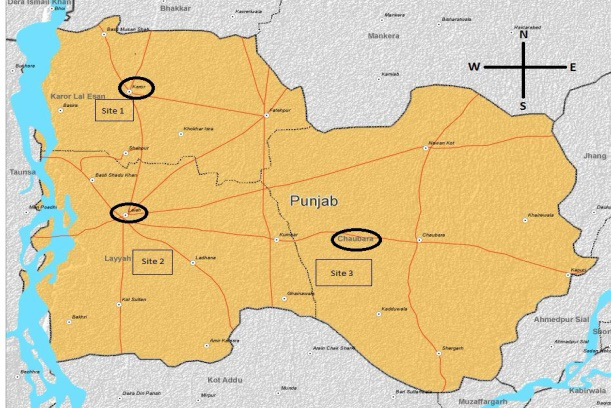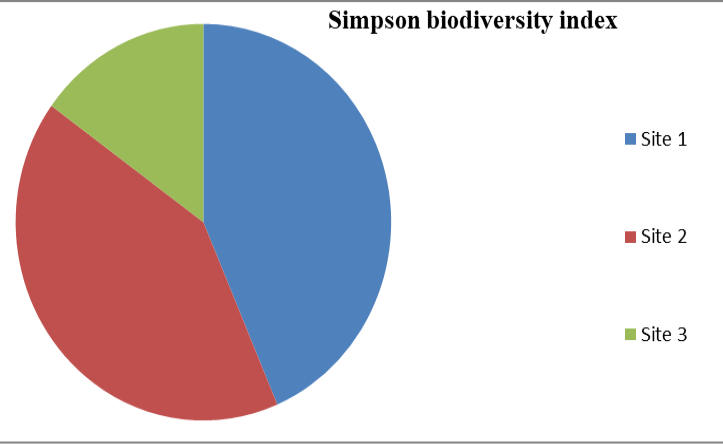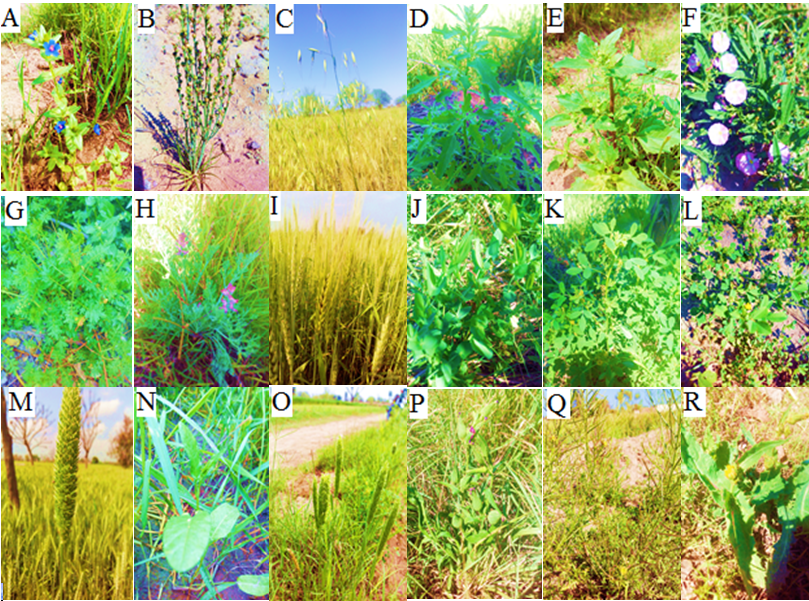Biodiversity Assessment of Weed Communities in Tube-Well Irrigated Wheat Fields in District Layyah, Punjab, Pakistan
Biodiversity Assessment of Weed Communities in Tube-Well Irrigated Wheat Fields in District Layyah, Punjab, Pakistan
Muhammad Shahid Hassan1, Nargis Naz2, Hassan Raza Javeed1*, Sabahat Zafar1, Laraib Kanwal1, Seerat Mariyum1, Areej Fatima1, Areeba Bashir1 and Muhammad Imran Atta3
Site 1 (Karor), site 2 (Layyah), and site 3 (Choubara). Map of Layyah showing the sited of study in district Layyah showing three sites of study in three tehsils (Karor, Layyah, and Choubara).
Relative frequency of weeds in wheat fields of three sites. RF1=Relative frequency of site 1, RF2= Relative frequency of site 2, and RF3= Relative frequency of site 3.
Relative cover of weeds in wheat fields of three sites. RC1= Relative cover of site 1, RC2= Relative cover of site 2, and RC3= Relative cover of site 3.
Importance value index of weeds in wheat fields of three sites. IVI1= Importance value index of site 1, IVI2= Importance value index of site 2, and IVI3= Importance value index of site 3.
Simpson biodiversity index of weeds in wheat fields of three sites.
A(Anagallis arvensis), B(Asphodelus tenuifolius), C(Avena futua), D(Chenopodium album), E(Chenopodium murale), F(Convolvulus arvensis), G(Coronopis didymus), H(Fumaria indica), I(Hordeum vulgare), J(Lathyrus aphaca), K(Melilotus indica), L(Medicago denticulata), M(Phalaris minor), N(Rumex dentatus), O(Setaria viridis), P(Silene conoidea) Q(Sisymbrium irio) and R(Sonchus asper).



















